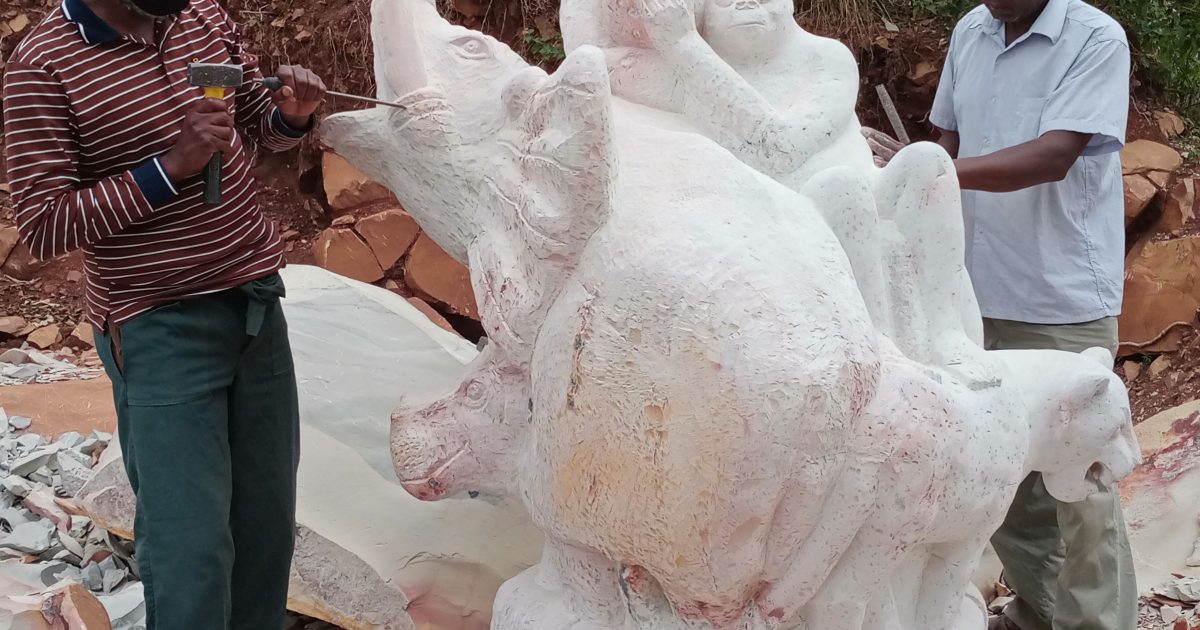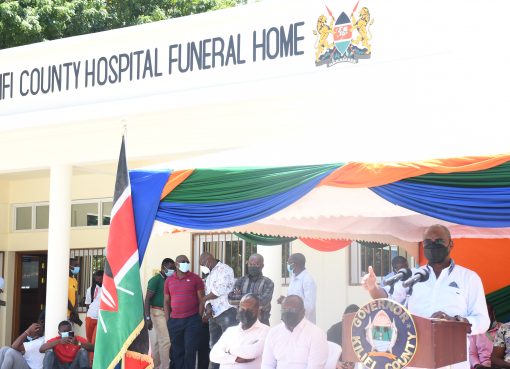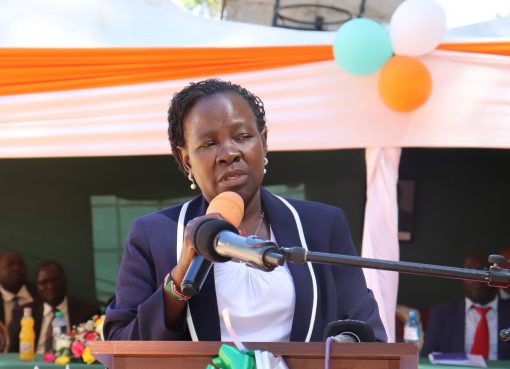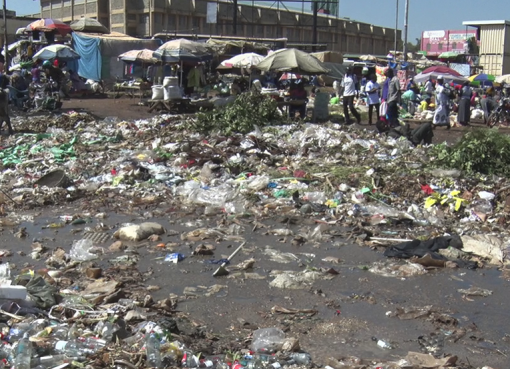
Soapstone mining in Tabaka Sub County in Kisii County has always been viewed as an important economic activity, providing income to over 7,000 residents.
However, the mineral’s enormous economic potential continues to be unveiled after a local artisan developed a plan to make sculpture models of legends and renowned politicians from the 47 counties and approach them for funding in what could generate millions of shillings for the local economy.
Shem Oroo Mogendi started with a sculpture of a Gusii Prophet Sakawa which earned him Sh.2 million from Kisii county government two years ago.
The sculpture which is now strategically placed at the entrance of the County Government headquarters was a motivating factor to do similar projects for other counties beginning with the western Kenya region.
At Bombware village in Tabaka ward, Mogendi proudly reveals his current work which came as a result of a deal with the local county government. He is working on a sculpture portraying unity of Omogusii, popularly known as Mwanyagetingi.
Mogendi explains that the sculpture which looks like a combination of wild animals sewn together, is about the unity of six Omogusii sub tribes including Omogututu symbolized by an elephant (enda ya echogu), omonyaribari and omachoge both symbolized by a gorilla (engoge), Omogirango by a leopard (engo), Omonchari hippopotamus (engubo) and Omobasi zebra (enchage).
The sculpture will be made in duplicates, soapstone and green granite which has been located at the nearby Bomonyama village in Bogetanga ward.
The 55-year-old father of five says the two sculptures will fetch him Sh.4 million by the time they are delivered before the end of this year.
He says the two had to be made so that the granite one which can withstand harsh weather, including scorching sun and torrential rains can be placed in the open, while the soapstone which is more delicate can be sheltered at the entrance of the county assembly.
Mogendi says the idea to make monuments of legends, politicians, sports personalities or cultural issues was informed by his desire to preserve historical information for future generations in physical images which are closer to the real.
He says next is monuments of Musa Nyandusi who was a Senior Colonial Chief and Nyantika Manyioro the first African to compete in the commonwealth games in 1956 which will be placed at Gusii Stadium.
He will then approach Vihiga County with a model for Joe Kadenge the famous footballer and Joseph Daniel Otiende a member of first post independent cabinet formed by President Jomo Kenyatta
He says he will do the same for Homa Bay County with a model of Gor Mahia the medicine man from whom the Gor Mahia football team derived its name, Siaya County with Odero Akang’o, a former colonial chief who encouraged formal education leading to many professors from the area, and Nandi county with model of Koitalel Arap Samoei who led the longest and bloodiest resistance against colonialist, and Eluid Kipchoge who recently entered the Guineas book of records for running the marathon in less than two hours at Ineos France.
Others are Kisumu’s Ramogi Ajwang’ who is believed to be the forefather of the Luo community,and Raila Amolo Odinga (aka Baba), Kakamega’s Nabongo Mumia and Masinde Muliro.
The ambitious artisan is however anticipating many challenges as he maneuvers his road to success. The current stalemate on revenue allocation by senators which has delayed dispatch of funds to county governments has impacted any payments to artisans, suppliers and contractors.
Other challenges include lack of capital, delayed payments by relevant authorities and fears that the mineral which is a nonrenewable resource might be exhausted after few years halting livelihoods to many small scale artisans who are depending on the natural resource.
Mogendi therefore appeals to the county governments to consider giving advance payments to enable him pay the workers and for machinery used to do the job.
One handyman, Thomas Mokaya says the job is exhausting since they have to use common tools like axes, knives and files which are not as effective as machines.
Mokaya who has been doing artisan jobs for 34 years says sculpturing of the monuments will be better paying than the common animal artifacts.
According to the County CEC for Trade, Dr. Skitter Ocharo, such sculpturing has been effective in selling the culture of the community and improving livelihoods besides area economy.
She however, advises the artisans to carry out research on specific preferences of various counties before sculpturing because culture issues vary and could elicit unintended meanings.
Soapstone can also be used to manufacture paper, paint, plastic, cosmetics, rubber and pharmaceuticals among others.
By Clinton Nyamumbo/Jane Naitore





